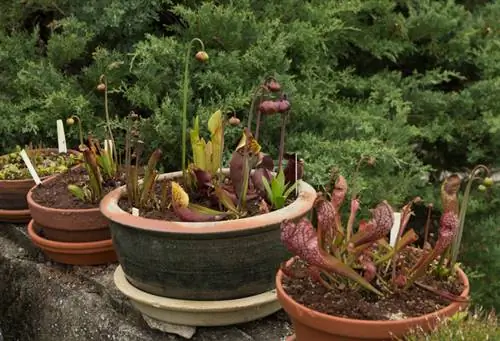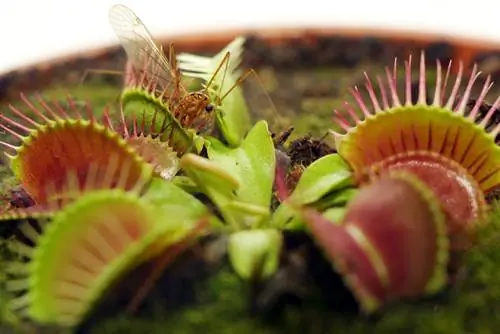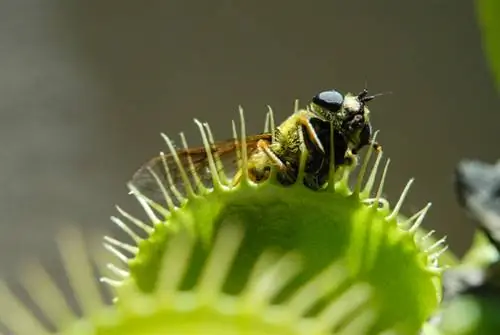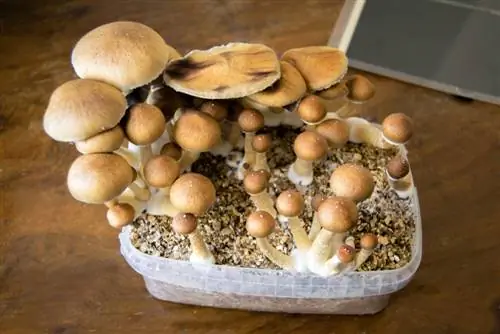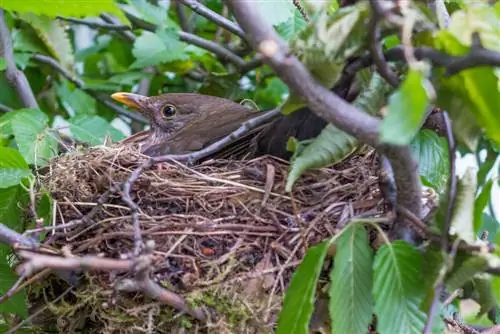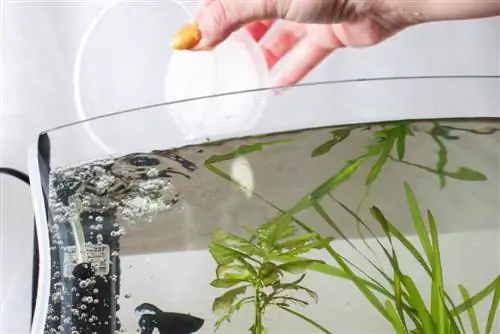- Author admin [email protected].
- Public 2023-12-16 16:46.
- Last modified 2025-06-01 06:02.
Growing carnivorous plants is an interesting hobby because this genus of plants is very different from keeping normal houseplants. However, carnivores require special conditions to thrive. Grow your own carnivorous plants - this is how it works!
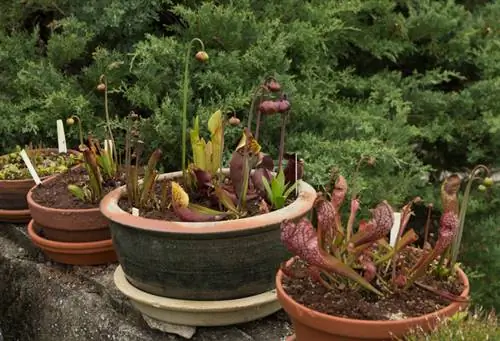
How do you grow carnivorous plants?
To successfully grow carnivorous plants, you should choose a bright, sunny location, provide high humidity, use special planting substrate and water carefully. For beginners, butterwort or sundew are recommended as easy-care varieties.
Breed your own carnivorous plants
In order to grow carnivorous plants themselves, beginners should first use simple varieties such as butterwort or sundew. Pitcher plants and Venus flytraps are not that easy to keep.
Even if feeding is a large part of the appeal - carnivores should not be fed by hand if possible. They look after themselves.
If you really want to feed the plants, only put a single, living prey animal into the traps.
Conditions for breeding carnivores
- Bright, preferably sunny location
- high humidity
- special plant substrate
- Tact when pouring
Almost all carnivore species need a lot of light. Only if they receive enough sun do flowers and strong trap leaves and traps develop.
Never plant carnivorous plants in garden soil. It is too nutrient dense and not loose enough. Always use special plant substrate or mix it yourself.
Most carnivorous plants are watered using the damming method, in which the irrigation water is poured into the saucer. Do not wet the plants directly. Calcareous water causes plants to die. Therefore, only use rainwater or, alternatively, still mineral water.
Propagate carnivorous plants yourself
If you have a good location and enough space for additional plants, you can breed new carnivores yourself by propagating existing specimens.
Propagation takes place via cuttings, dividing the plants and sowing. Propagating carnivorous plants through seeds is the most complex process. It also takes longer for the new plants to develop traps or trap leaves.
The easiest way to propagate carnivorous plants is through cuttings or division. Spring is a good time for this, when repotting the plants is on the agenda anyway.
Tip
If you want to grow carnivorous plants in a glass, you need to be particularly careful about the location. If the glass is left directly in the sun for a long time, very high temperatures arise. The plants then literally “burn”.

